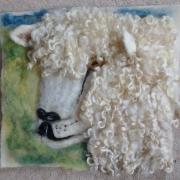Animal magic with the media vet and chef to pets
Just like ourselves, as pets get older, they become prone to more and more diseases and problems – in simple terms, the body starts to fail bit by bit over time as the wear and tear of everyday life takes its toll, and this leads to illness and health problems. The most serious example of this is the incidence of cancer in older animals, with nearly all types of malignant growth becoming more common as pets get older, but there are many other diseases which occur more frequently as pets age, including arthritis, heart disease and many others.
Part of the reason that we see so many health problems in older pets is simply because our pets live longer lives nowadays. A few decades ago, when pets lived on household scraps and vets had only the most basic treatments available, it was unusual for cats and dogs to live into their mid-teens or beyond, but today, with modern healthy diets and state of the art medical and surgical facilities, more and more pets are living longer. And with this aging population of pets comes a whole range of diseases and health problems that were unusual years ago, but which are becoming commonplace nowadays.
Take Peppy, a dog I saw a couple of years ago in the surgery. At 15 years of age, she was well into her old age, and really living well beyond what could be termed a natural lifespan for a medium-sized dog. Until recently she’d been in really good health, apart from some stiffness in her back legs due to mild arthritis, but she suddenly went downhill and was brought into the surgery by her owner, the equally aged Mrs Pearson.
‘I’m really worried about Peppy,’ said Mrs Pearson as she encouraged an obviously miserable and reluctant Peppy into the consulting room, ‘she’s not been right for a couple of days now and what with her age and everything, I’m really concerned about her.’
It took a little while and some detective work to get to the diagnosis, but by the end of the consultation it seemed likely that Peppy was suffering from a problem that is increasingly common in older female dogs – a womb infection. This occurs when the lining of the womb becomes thickened and infected, and leads to a range of symptoms including lethargy and depression as Peppy demonstrated, plus excessive thirst and usually a mucky discharge from the back end. In Peppy’s case, however, there was no mucky discharge and it required an ultrasound scan after the consultation to confirm the diagnosis.
Once I knew what the problem was there was no time to waste, as a closed womb infection like this, where there is no leakage from the back end, is potentially very dangerous and even life-threatening. We stabilised Peppy on some intravenous fluids before taking her through to the operating theatre for surgery to remove her womb. These operations are much more serious than a routine neutering operation due to the age and frail state of the patients, but Peppy pulled through fine and went on to make a full recovery – and she’s still going strong now in her late teens, an age which would have been almost unheard of a few decades ago.
Cases like this show that, while we do face plenty of challenges looking after our aging pet population, modern veterinary care can often hold back the effects of time and keep our pets fit and healthy for many years.
Follow Joe on Twitter: @joethevet



























